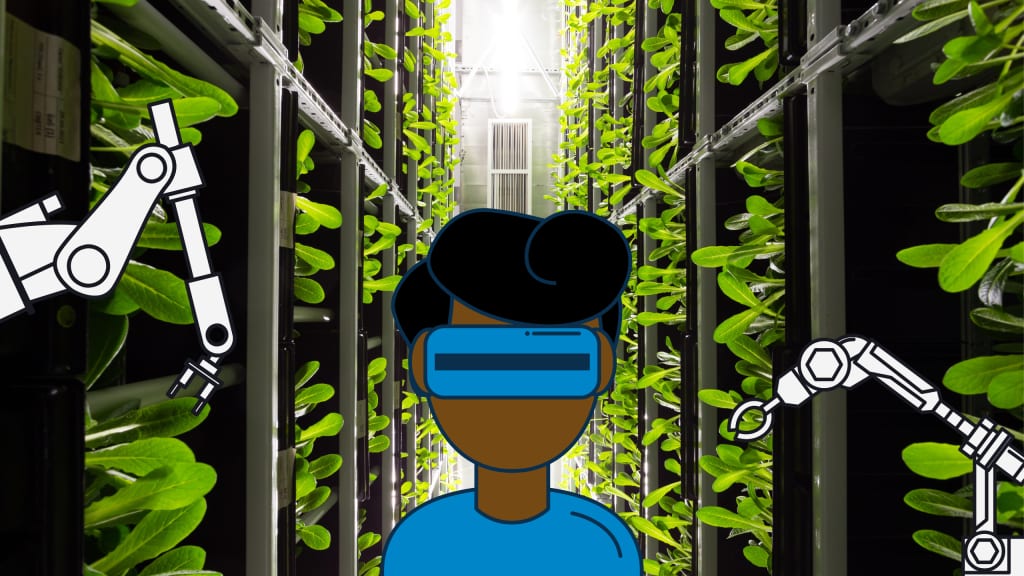The Future of Agriculture Is Vertical: 6 Benefits You Need to Know
Advantages of vertical farming over traditional agriculture.

Our current food system is facing multiple challenges that could have catastrophic consequences for the planet. Climate change is one of the most critical obstacles, as conventional agricultural practices contribute significantly to greenhouse gas emissions and weather fluctuations that can harm crop production.
Land usage is another problem, with farming methods causing deforestation and habitat loss while expanding cities makes agricultural land scarce and increases food insecurity. Water scarcity is also a significant issue, with agriculture being the biggest consumer of freshwater resources worldwide, and climate change exacerbating the problem in some areas.
Benefits of vertical farming over traditional agriculture
Vertical farming involves growing crops on top of each other rather than in horizontal rows. By utilizing space more efficiently, vertical farming allows for the conservation of natural resources. This agricultural method is typically practised indoors where environmental conditions can be carefully controlled to optimize plant growth. Here are the key benefits of vertical farming over traditional agriculture:
1. Higher crop yields per given space
Utilizing vertical space instead of horizontal rows, allows farmers to grow more food in less space. As a result, vertical farms can produce more food per square foot of land than traditional farms. This advantage is becoming increasingly important as the expansion of industrialization and urban areas with high population density is resulting in a decrease in arable land for agricultural purposes.
2. Reduced water use and run-off
Vertical farmers require 70% - 95% less water than traditional farmers. This is achieved through the use of hydroponic systems, which are at the core of vertical farming. Water and nutrients are recirculated to the plant roots multiple times, so there’s much less waste or runoff.
3. Reduced arable land use
Vertical farming offers a promising solution to the dwindling availability of arable land caused by industrialization and urbanization. By utilizing spaces like rooftops or abandoned buildings, vertical farms require much less land than traditional farming methods. This not only alleviates the strain on available arable land but also enables the growth of crops in urban areas where land is scarce. Due to this versatility, vertical farming holds the potential to enhance food security in densely populated cities while also mitigating the environmental impact of food production.
4. Reduced transportation
Building vertical farms in urban areas or close to consumers significantly decreases the necessity for long-distance transportation and its associated costs. This approach not only lowers the carbon emissions caused by food transportation but also allows consumers to access fresher produce with ease. As a result, vertical farming is a more environmentally friendly way to produce food.
5. Reduced dependence on weather and soil quality
Crops may be cultivated year-round in vertical farms without being impacted by unpredictable weather. This is achieved by closely regulating variables such as temperature, humidity, and lighting.
Also, by cultivating crops in soilless media, these farms can decrease the demand for fertile land while simultaneously ensuring consistent production of fresh produce throughout the year.
6. Reduced risk of pests and diseases
Vertical farms offer a tightly controlled and contained atmosphere, effectively eradicating the threat of pests and diseases that frequently plague traditional agriculture.
These meticulous control measures ensure that harmful chemicals and pesticides are unnecessary in vertical farming, which yields healthier and safer crops for consumers. Moreover, the absence of these toxic substances is better for the environment and our health.
Thank you for taking the time to read this article! If you found it informative and interesting, consider joining my newsletter, where I explore the intersection of biology, technology, and business in creating a sustainable food system.
References:
- https://boweryfarming.com/vertical-farming-advantages-you-should-know-about/
- https://www.edengreen.com/blog-collection/what-is-vertical-farming
- https://www.usda.gov/media/blog/2018/08/14/vertical-farming-future
About the Creator
Eshan Samaranayake
Exploring how biotech, food tech, alternative proteins, and business can help develop a sustainable world 🌏 https://linktr.ee/eshan.s






Comments
There are no comments for this story
Be the first to respond and start the conversation.